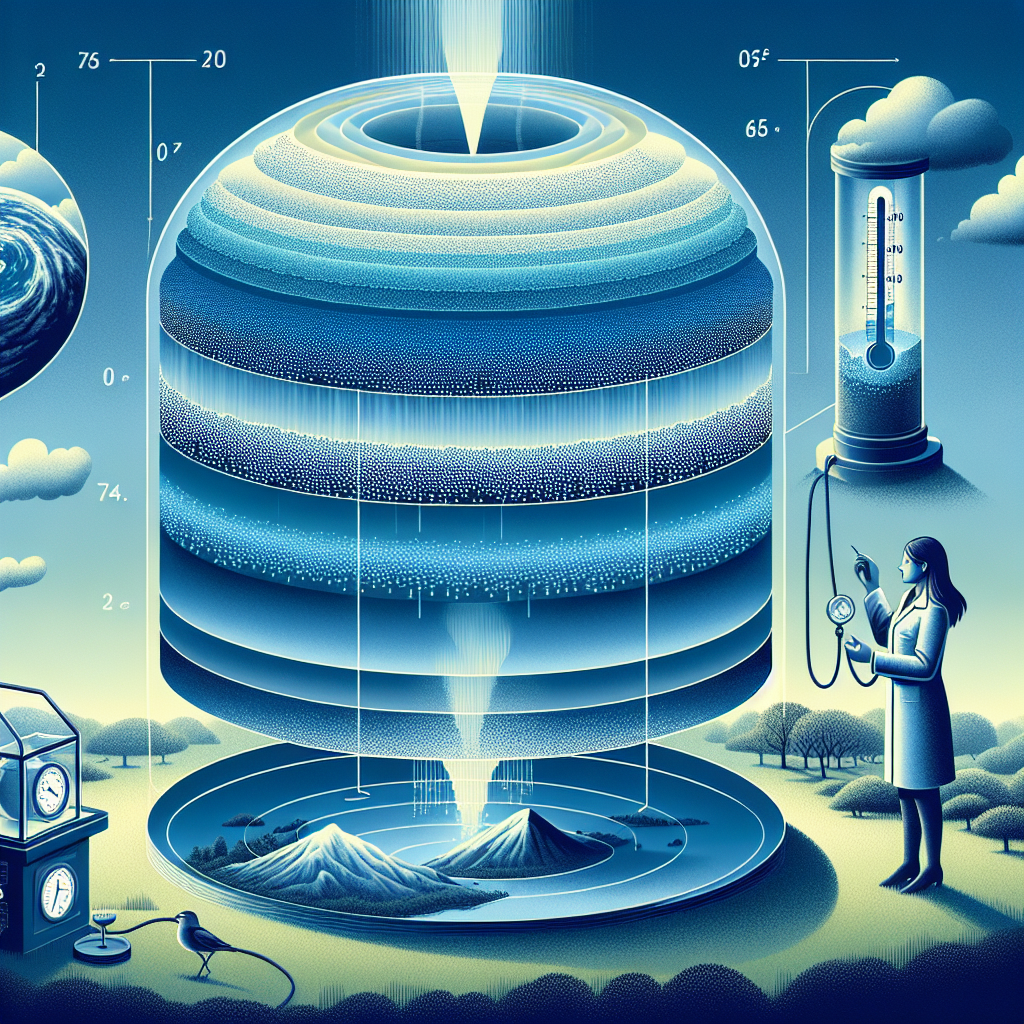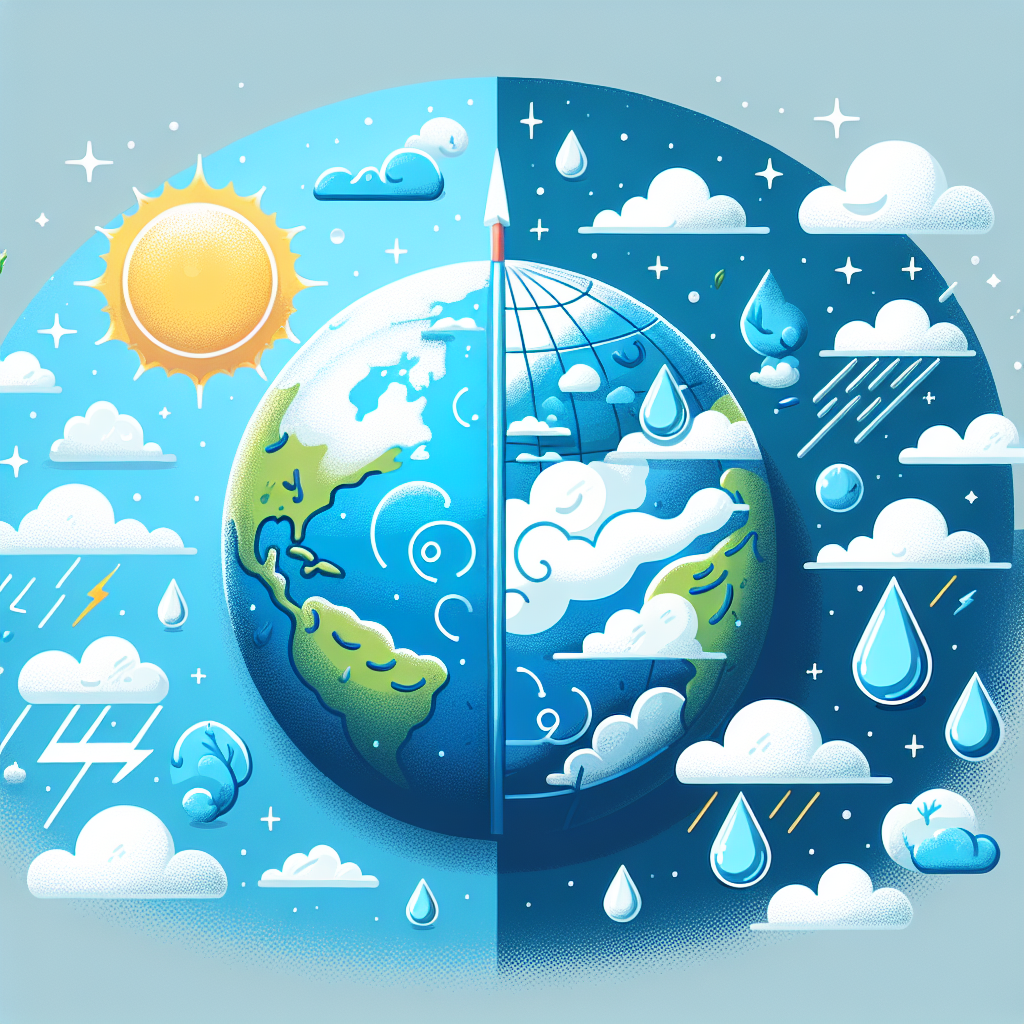Understanding Humidity
Humidity is defined as the concentration of water vapor present in the air. It is an essential component of the Earth’s atmosphere and plays a crucial role in weather systems and climate. Humidity is typically measured in percentages, indicating the amount of moisture in the air relative to the maximum it can hold at a specific temperature.
Types of Humidity
Absolute Humidity: This refers to the actual amount of water vapor (in grams) present in a unit volume of air. It is expressed in grams per cubic meter (g/m³). Absolute humidity provides a clear picture of the moisture content in the atmosphere.
Relative Humidity (RH): This is the ratio of current water vapor to the maximum amount of water vapor the air can hold at a particular temperature, expressed as a percentage. For example, an RH of 50% means the air is holding half the amount of moisture it could potentially hold at that temperature.
Specific Humidity: This measurement accounts for the mass of water vapor compared to the total mass of air (including dry air and water vapor) in a given volume. It is usually measured in grams of water vapor per kilogram of air.
The Role of Humidity in Weather Patterns
Humidity significantly influences weather changes and patterns in several ways:
1. Formation of Clouds and Precipitation
Clouds form when moist air rises, cools, and cannot hold all its water vapor. The excess water condenses into tiny droplets, forming clouds. High humidity levels are conducive to cloud formation, leading to precipitation. If humidity is high enough, the clouds grow heavy with water droplets, resulting in rain, snow, or other forms of precipitation.
2. Temperature Regulation
Humidity affects temperature regulation in both daily weather and climate. High humidity usually corresponds with warm air, making it feel hotter than it is. The heat index, which factors in humidity and temperature, demonstrates how discomfort can increase with high moisture levels. Conversely, low humidity can enhance cooling, leading to cooler temperatures even in warm air masses.
3. Wind Patterns and Storm Development
Moisture in the atmosphere fuels storm development, particularly in tropical regions. When warm, humid air rises, it creates areas of low pressure that can lead to the formation of storms. High humidity combined with unstable air masses can lead to severe weather events such as thunderstorms, hurricanes, and tornadoes. Understanding local humidity levels helps meteorologists predict severe weather.
Humidity and Its Effects on Weather Systems
Different weather systems interact with varying humidity levels, leading to diverse patterns across regions:
1. Fronts
Weather fronts represent boundaries between air masses. The interaction of humid air with different temperatures can significantly influence weather on both sides of a front. For example, when warm, humid air meets a cold front, the warm air is forced upward, causing clouds and precipitation due to the cooling and condensing of the water vapor.
2. High-Pressure Systems
High-pressure systems, typically associated with clear skies and stable weather, can lead to reduced humidity levels. As air sinks, it warms, allowing it to hold more moisture and becoming drier. This drying effect often leads to sunny conditions, inhibiting cloud formation and precipitation.
3. Low-Pressure Systems
In contrast, low-pressure systems encourage rising air, which leads to cooling and cloud formation. Increased humidity is characteristic of low-pressure systems, often resulting in rain or storms. Meteorologists monitor these systems and their associated humidity levels to forecast potential weather events effectively.
The Importance of Humidity Measurement
Accurate humidity measurement is vital for weather forecasting and climate studies. Meteorologists use various methods and instruments to measure humidity, including:
Hygrometers: These are devices specifically designed to measure the moisture content in the air. There are multiple types, including psychrometers, electronic hygrometers, and dew point hygrometers.
Weather Satellites: Modern meteorology employs satellites to capture vast amounts of meteorological data, including humidity levels across different altitudes in the atmosphere.
Weather Stations: Ground-based weather stations equipped with sensors collect real-time humidity data, further informing weather predictions and monitoring local climatic changes.
Humidity’s Influence on Climate Patterns
Over extended periods, humidity levels play significant roles in shaping regional climates. Areas with consistently high humidity (like tropical rainforests) experience distinct climates compared to arid regions (like deserts). These differences manifest in:
Evapotranspiration: High humidity leads to significant evapotranspiration, where water vapor is released from soil and plant surfaces, influencing local weather patterns and climates.
Climate Change: In the context of global warming, increased temperatures have led to higher evaporation rates, which raise humidity levels in many regions. Changes in humidity patterns can exacerbate extreme weather events, alter precipitation patterns, and contribute to droughts or floods.
Conclusion of Humidity Effects
Humidity serves as a fundamental variable influencing weather changes and climate. It affects precipitation, temperature, wind patterns, and the development of weather systems. Monitoring and understanding humidity levels are crucial for accurate weather forecasting and preparing for climate-related changes. The interaction between humidity and other atmospheric elements is complex and continues to be a vital area of research in meteorology and climate science. Understanding these relationships helps society better cope with and adapt to weather variations and climate change.




















